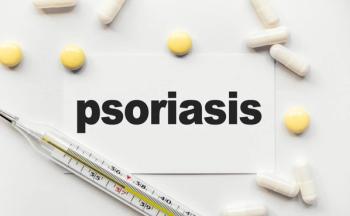
Oral Hygiene Reduces Chance of Ventilator-Associated Pneumonia in ICU Patients, Study Shows
Oral care decreased both the number of intensive care unit (ICU) patients and the length of stay, as well as the amount of time of mechanical ventilation.
Patients on mechanical ventilation who brushed their teeth and used chlorhexidine mouthwash had a reduced chance of developing ventilator-associated
Oral care decreased both the number of intensive care unit (ICU) patients and the length of stay, as well as the amount of time of mechanical ventilation. The study also demonstrated a lower mortality rate among patients who both brushed their teeth and used chlorhexidine mouth wash.
The authors conducted a prospective randomized control study including 220 patients who were on ventilation in the ICU between May 2019 and April 2020. All patients were between the ages of 18 and 65 years, and the ratio of female and male patients was nearly even, with only 2 more male patients than female. The mean (SD) age was 39.06 (15.56) years.
Patients were divided into 2 groups, each with 110: the study group (group S) and control group (group C). The groups had similar mean ages and female-to-male ratios, and most patients in both groups did not suffer from any comorbidities.
Group C was only treated with the chlorhexidine mouthwash, while group S was treated with the mouthwash in addition to tooth brushing and moisturizing gel over their gums, lips, and the inside of the mouth.
Using the Beck Oral Assessment Scale (BOAS), assessments were conducted 4, 6, 8, and 12 hours after beginning oral hygiene, and BOAS scores were found to be overall significantly lower in group S than group C.
The authors also assessed pneumonia based on abnormal chest X-rays, endotracheal culture report, fever, and chest auscultation, as well as incidence of VAP and mortality. They found that abnormal chest X-rays, positive culture reports, fevers, positive auscultatory findings, and incidence of VAP and mortality were all significantly reduced in group S compared with group C.
Fever was present in a significantly higher proportion of group C cases (75.5%) compared with group S (42.7%). Oxygen saturation levels were also significantly higher in group S (95.75 ± 6.09%) compared with group C (92.88 ± 7.94%). Additionally, a significantly greater proportion of patients in group S had normal chest X-rays (47.3%) compared with the control group (23.6%).
The number of days in the ICU was significantly lower among those practicing additional oral hygiene, with group S patients staying in the ICU around 12 days compared with group C patients who stayed around 15 days, on average.
Mechanical ventilation length was also significantly reduced, dropping from about 14 days in group C to about 11 days in group S, on average.
Overall, endotracheal tube (ETT) cultures in 33.6% of group S patients were infected, compared with 59.1% of group C patients. Further, mortality was found to be significantly lower in group S (44.5%) compared with the control group (60%).
“This difference in mortality rates may be due to the poor condition of patients at our hospital; our hospital is a tertiary care hospital in which most patients are referred in poor condition with grave prognoses,” the authors wrote.
The study being performed in a single ICU and only using tracheal aspirate samples was a major limitation mentioned by the authors, who noted that results may vary between ICUs.
Reference
Singh P, Arshad Z, Srivastava VK, Singh GP, Gangwar RS. Efficacy of oral care protocols in the prevention of ventilator-associated pneumonia in mechanically ventilated patients. Cureus. Published online April 2, 2022. doi:10.7759/cureus.23750
Newsletter
Stay ahead of policy, cost, and value—subscribe to AJMC for expert insights at the intersection of clinical care and health economics.







































